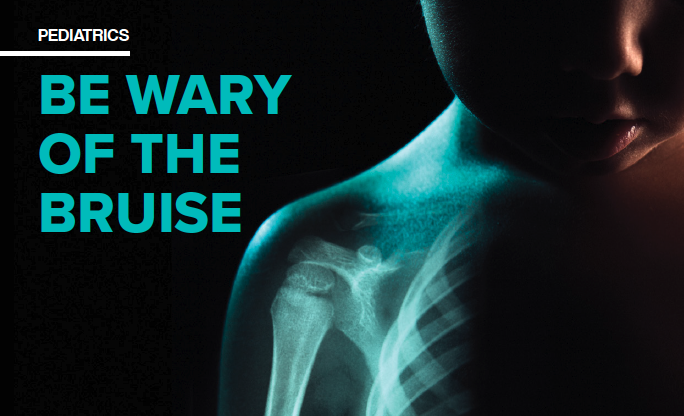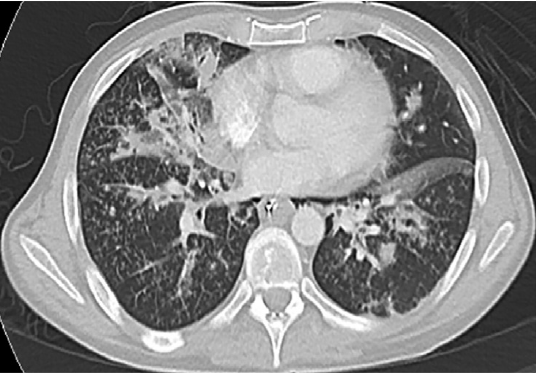Ideas and Activities for EMIGs
Keeping interest and enthusiasm going is a never-ending concern for any EMIG. There are many ways that can be fun and exciting, but all take some time to plan properly. Below is a list of ideas that may help your EMIG promote emergency medicine (EM) at your school.
Meetings can be scheduled at many different times. Hold your meeting at a time that is different from other clubs. If you choose the lunch hour, you might consider making it a "brown bag."
A good speaker attracts a crowd. Consider getting a local speaker from the medical school or from the community. Topics can be as calm as basic first aid or as dramatic as burns, environmental emergencies, and trauma. "War stories" from the emergency department (ED), especially with slides, always draw good crowds.
ER tag-alongs are of special interest to first-and second-year students who have not had much clinical experience. Discuss the idea with the ED Director. Students could sign up for shifts and be assigned to a resident or staff "preceptor" who would allow the student to participate in patient care to the extent appropriate. Set up rules for proper attire and conduct while in the ED.
Ambulance ride-alongs: Another great idea for students at all levels. This provides insight to pre-hospital care that many physicians never experience. Students can sign up for a shift with an EMT or paramedic crew. You may need to set this up through the city EMS medical director. Because other people ride (EMT, paramedic, and other students) space may be limited. If so, consider suburban and rural ambulance services as options.
Intubation, suturing and casting/splinting workshops: "Hands on" opportunities can be one of the most rewarding experiences, especially to first-and-second-year students who do not have the confidence that the clinical years will bring. Discuss these ideas with the anesthesia, surgery and EM departments. Residents and staff can be instructors for intubation and suturing. In addition, paramedics can give intubation instruction. You could also consider variations on this theme, such as splinting of fractures, drawing blood and starting IV's. All are skills that will help a medical student during the clinical years.
Lectures
Introductory EM Lecture
"What is EM?" Lecture can be given by the group’s advisor or the EM residency director. This is a basic outline of what the specialty of EM entails, available
fellowships, different career paths, etc.
Army Reserve
An emergency physician discussed his experience as an army reserve physician in Iraq.
Sexual Assault
A nurse spoke about the medical management of sexual assault patients in the emergency department.
Rural EM
A physician trained in family medicine and working in a rural ED spoke about emergency medicine in rural settings.
Types of Practice
The director of EMCARE spoke about differences between academic and private EM, and different business models in private EM. Lectures can also focus on working in teaching hospitals vs. non-teaching hospitals.
Flight for Life
Flight for Life did a presentation on their organization and had the helicopter come to campus for students to check out. They also discussed several cases.
International EM
An emergency physician spoke on his work in Capetown South Africa. He does both clinical work and is conducting several research projects in the county trauma center.
Wilderness EM
Wilderness medicine lecture series done by emergency physicians including introductory lecture, aquatic emergencies (diving), expedition/altitude medicine, skiing and snowboarding injuries, and psychological aspects of wilderness injuries and survival.
Airways
An emergency physician gave a presentation on difficult airways.
The Match
Fourth year medical students organized a panel on applying to residency and the match. Other schools include interns and residents in this panel. This can be an informal Q&A with dinner and drinks.
Pre-Hospital EM
Introductory lecture to pre-hospital care. This included a reenactment of a GSW on campus and illustrated how EMS/Life-flight responds. Other schools discuss the role of EMS in the ED.
Toxicology
A general toxicology overview with examples of the most common toxidromes.
Research
Overview of EM research. One physician can give an overview of research opportunities in EM, or several physicians can outline specific projects they are working on.
Pediatric EM
The peds EM fellowship director came and talked about this specialty. He outlined what the clinical work is like and how you pursue peds EM.
Snake Bites
This lecture discussed snakebites and their management. Cave rescue was also discussed.
EM Electives
Lecture on 4th year electives in emergency medicine.
Tropical Medicine
The director of the travel/tropical medicine department came and spoke on some interesting infectious disease topics. They also discussed the unique opportunity emergency physicians have to practice internationally.
Fellowships
Various lectures on fellowship opportunities for emergency trained physicians. It’s possible to let 2 speakers come in a given hour to increase the exposure
for the students. Fellows or fellowship directors are good for these talks.
Radiology
Series of lectures on emergency radiology. For example, recognizing common surgical emergencies on CT scans, CXR’s, etc.
Disaster Medicine
What is disaster medicine? How are we preparing for disasters and what is the role for emergency physicians?
Medical Decision Making
How we make decisions in the emergency department and assign value to these decisions. This lecture caused many students to question the decisions made on a
daily basis in both patient management and the overall management of the ED.
Trauma
Lecture on traumatic injuries seen in the ED. Presentation was a case-based format.
Substance Abuse - Patients
Drug abuse in patients seen in the ED. Lecture discussed the clinical presentation as well as management.
Substance Abuse - Physicians
A former emergency physician who lost his license due to substance abuse and addictions discussed his experiences and how he developed addictions. He now
practices addiction medicine (psychiatry).
Workshops
Suturing
Students practice basic suturing techniques on pig’s feet (bananas, surgery rags, and cadavers can also be used). EM residents and attendings teach the workshop.
IV's/Blood Draws
Students practice starting IV’s and drawing blood on each other. A cannulation mannequin can also be used (many simulation centers have these). Also taught by EM residents.
Intubation
Students intubate cadavers in the anatomy lab (un-embalmed) and watch EM residents practice thoracotomies on cadavers at the end of the night.
Mannequins can also be used.
Ultrasound
A lecture on the basic concepts of ultrasound in the ED was done. Students then used US machines to practice FAST exams and other exams on each other. Machines
were provided by a rep from an ultrasound company. Done in conjunction with the EM US fellows.
Simulations
EMIG members assisted during the resident practical exams at the simulation center. They helped with IV placement, setting up defibrillators, drawing medications, chest compressions, assisting with ventilating patients after intubation, etc. Other schools
reserve the mannequins for student use to simulate resuscitations.
Cricothyrotomy
Students used pig tracheas to practice cricothyrotomies. Splint and Cast Workshop focused on practicing different casting and splinting techniques. This can be done in conjunction with the ortho interest group.
Primary and Secondary Surveys
Introduction to the primary and secondary surveys. This can be lead by 4th year medical students. Some schools use the simulation centers.
Joint Injections
Joint injection workshop where students used mannequins to practice injections. This can be done in conjunction with the ortho interest group.
Lumbar Puncture
Lumbar puncture technique taught in the simulation center.
Cadaver Lab
Cadavers (if available) can be used to practice chest tubes, cricothyrotomies, IO needle placement, etc.
Obstetrics
Simulation center and mannequins were used for obstetric scenarios and esuscitations. This can be done in conjunction with the OB/GYN interest group.
Mass Casualty
A mock mass casualty experience was designed where students serve as victims. Students and residents evaluated and triaged patients.
ECGs
This was timed to correspond with the physiology block. This workshop was lecture based and discussed the fundamentals of ECG as well as interpretation of common ECGs. Other workshops focus more on lead placement.
Integration with ED Shift
This program incorporates skills workshops followed by a 3 hour shift in the ED. Students are paired with a resident, and if a procedure arises, the students are
given an opportunity to perform the procedure. Students can also be paired with nurses to practice peripheral IVs.
Electives
EMS Elective
Students do several ride alongs with local paramedics and receive school credit. Students mainly ride on the ambulance to observe. The elective also includes several lunch lectures on EMS.
Wilderness EM
Students have several workshops in the mountains on basic concepts relating to stabilization and transportation in wilderness EM. Taught by several EM residents/attendings. This elective also includes a few lunch lectures.
First Aid Course
Advanced first aid course for first year medical students.
ACLS
4th year medical students get certified in ACLS. The certification involves running codes on mannequins in simulation centers.
International
Clinical work abroad relating to emergency medicine. Alternatively, this could involve research abroad relating to EM.
ED Shadowing
Shadowing residents in the ED for two shifts. This is open to first and second year medical students. This is available as a paid internship at other schools.
Research
Research relating to emergency medicine can be counted for credit.
Toxicology
Toxicology rotation open to fourth year medical students. Includes lectures discussing recognition and management of common toxidromes, conference attendance, and clinical work.
Dive Medicine
The hyperbarics EM fellow and wilderness medicine fellow run this 2-week course.
- The first week is didactics along with tours of various chambers.
- The second week certifies students to dive.
Experienced divers are still encouraged to take the course as the 2nd week they can receive a rescue diver certification.
EM Basics
Elective for first and second year medical students.
Four week course introducing basic EM skills (splinting, suturing, IV placement, etc) and the science behind them.
Ultrasound
Elective for second year students. This consists of a semester long course introducing the basics of US and clinical practice.
Community Service
Introduction to EM
Introduction for local middle school and high school students. This includes brief PPT presentation, ultrasound lab, suturing bananas, etc.
Community Health Fair
Participation at the annual community health fair. Students offer free blood pressure screenings, distribute laminated cards with what to do in an emergency, and sell t-shirts.
Med Reconciliations
Students helped community members make a list of their prescriptions to carry with them in a wallet for easy access in case of emergency.
Drinking and Driving
“Not just another drink” outreach event. Students educated community on effects of alcohol and responsible drinking.
Kids in Clinic
Students invited local school kids to “clinic” to discuss different body systems. Different interest groups did different “departments”. For example, EM did bones
and fractures, use of crutches, and Xrays.
CPR Training
This can be offered for free or for fundraising. CPR trained individuals can become AHA certified CPR instructors and can go out to churches or other social groups and offer CPR or first aid courses.
Related Content



Jun 11, 2021
Pulmonary Manifestations Following IV Injection of Crushed Suboxone: A Case of Excipient Lung Disease
Include excipient lung disease (ELD) in the differential diagnosis when evaluating and treating a patient with a history of intravenous drug use presenting with respiratory failure and typical findings on chest imaging.




